Getting a good night’s sleep can be challenging as the temperature rises during the summer months. Sweaty and uncomfortable nights can disrupt sleep quality and overall well-being, leaving you tired and grumpy. A pillow specifically designed for hot weather can make a significant difference in ensuring a restful sleep experience. There are different types and materials available, plus a range of interesting features.
What is the cooling pillow concept?
The cooling pillow concept is all about creating a sleep surface that helps you stay at a comfortable temperature all night long. Instead of trapping heat like traditional pillows, cooling pillows use breathable fabrics such as bamboo and advanced materials like gel-infused or ventilated memory foam to promote airflow and disperse body heat. Many are also moisture-wicking, keeping you dry if you tend to sweat at night. The goal is to prevent overheating, support better sleep quality, and leave you feeling refreshed in the morning, making them especially popular with hot sleepers or those who struggle with night sweats.
What do cooling pillows do?
Cooling pillows are designed to help regulate your body temperature while you sleep, keeping you cool and comfortable throughout the night. Unlike traditional pillows that can trap heat, cooling pillows use breathable materials and moisture-wicking fabrics, such as bamboo, to encourage airflow and prevent overheating. Many also feature gel-infused or ventilated memory foam that disperses body heat, reducing the chance of night sweats. By staying cooler, you’re more likely to fall asleep faster, stay asleep longer, and wake up feeling refreshed without the discomfort of a hot, restless night.
What are some factors to consider when choosing a cooling pillow?
When selecting a cooling pillow, it’s important to consider various factors that contribute to its cooling properties and your overall comfort:
Material
You should look for pillows made from breathable and moisture-wicking materials such as bamboo, cotton, or cooling gel-infused memory foam. The properties of these materials will help with that cool side of the pillow feeling we all crave on hot nights…
Loft Height
The loft height of a pillow is important for your comfort; generally, the higher the loft, the more comfortable the pillow. Your overall comfort will help you sleep better and stay cool at night.
Fill
The pillow fill is important, too. If a pillow is filled with feathers, it might be itchy and uncomfortable, which won’t make sleep any easier; memory foam has natural heat retention, so it’s best to look for fillings which counteract this by adding gel or other technologies.
Technologies
Cooling pillows are often set aside from normal pillows due to the technologies used in their construction: this might be the use of a gel layer within the pillow, or using a mesh frame with spaces to allow for airflow. These innovations are what help make it a cooling pillow, as opposed to just a normal pillow.
Types of cooling pillows
There are various types of cooling pillows on the market, each made slightly differently to help keep you cool on warm nights.
Latex Pillows
These are pillows filled with a shredded latex material; it is an alternative to down and offers a cooling effect, but it doesn’t work for people with latex allergies.
Bamboo Pillows
Bamboo pillows are hypoallergenic, naturally antibacterial, and inherently breathable and thermoregulating. Bamboo is a soft and comfortable material; bamboo-filled pillows are particularly squishy.
Hybrid Pillows
A hybrid pillow generally refers to pillows made from memory foam, which naturally retain heat but are tweaked to ensure a cooling effect too, by utilising open-cell technology, for example, and incorporating cooling fabric like bamboo or linen.
What are the pros and cons of different cooling pillow types?
As with all types of pillows, there are pros and cons to various cooling pillows. It comes down to personal preference and what is best for you, so it is worth considering these.
Latex Pillows – Pros and Cons
Pros:
-
Cooling and breathable: Latex allows for excellent airflow, helping hot sleepers stay comfortable.
-
Durable: High-quality latex pillows can last many years without losing shape.
-
Soft yet supportive: They contour gently to the head and neck while maintaining resilience.
-
Eco-friendly options: Natural latex is biodegradable and free from animal products, appealing to eco-conscious buyers.
Cons:
-
Latex allergies: Not suitable for those with relatively common latex sensitivities.
-
Heavy: Latex pillows tend to be denser and heavier, making them less easy to move or fluff.
-
Higher price point: Natural latex pillows can be more expensive than synthetic alternatives.
-
Distinct smell: Some latex pillows may have a natural rubbery scent when new.
Bamboo Pillows – Pros and Cons
Pros:
-
Naturally hypoallergenic: Resistant to dust mites and ideal for those with allergies or asthma.
-
Antibacterial properties: Keeps bedding fresh and cleaner for longer.
-
Moisture-wicking: Absorbs and evaporates sweat quickly, preventing night sweats.
- Soft and breathable: Provides a luxurious, cloud-like feel while regulating temperature.
-
Durable quality: Bamboo fibres are strong, meaning the pillow maintains its structure for years.
-
Eco-friendly: Bamboo is a sustainable material, growing quickly with minimal water and pesticides.
Cons:
-
Not always machine washable: Many bamboo pillows have memory foam cores that require spot cleaning.
-
Adjustment period: Some sleepers may need time to get used to the unique feel of bamboo and memory foam blends.
-
Price: Bamboo pillows can be slightly more expensive compared to synthetic options.
Hybrid Pillows – Pros and Cons
Pros:
-
Blended comfort: Combines the best features of materials like memory foam, bamboo, or latex for tailored support.
-
Enhanced support: Ideal for maintaining spinal alignment in multiple sleeping positions.
-
High quality: Designed with advanced construction and innovative technology for long-lasting use.
-
Cooling technology: Many hybrids include gel-infused foam, bamboo covers, or micro-pods to improve airflow.
-
Versatility: Suits side, back, and combination sleepers.
Cons:
-
Higher cost: Premium design and materials often make hybrids more expensive.
-
Heavier than standard pillows: Added layers and technology can make them less lightweight.
-
Maintenance: Some hybrids require special care for covers or inserts.
-
Not “one size fits all”: While versatile, they may still feel too firm for sleepers who prefer softer pillows.
What are some additional features to consider?
When buying a cooling pillow, look for additional features that might help you decide which one to purchase. Do you want a washable zip-off cover, for example, or do you need a pillow with orthopaedic-grade support for a bad back? Consider your budget, any allergies or sensitivities, and the eco-friendliness of different pillows.
Keep cool this summer with a cooling pillow
Hot nights can significantly affect your sleep quality, so looking at pillows which offer cooling properties is important when purchasing a new one. Comfort and support are crucial for a good night’s sleep, and staying cool helps matters even more. Consider your personal preferences, as well as materials and technologies, when buying a cooling pillow.

![[MattressTopper] Panda London Memory Foam Bamboo Mattress Topper package box](http://pandalondon.com/cdn/shop/files/Bamboo_Mattress_Topper_Package_Box.webp?v=1742301823&width=1500)
![[MattressTopper] Panda London Memory Foam Bamboo Mattress Topper on the floor](http://pandalondon.com/cdn/shop/products/Panda-Memory-Foam-Bamboo-Mattress-Topper-Yoga-e1624045454555.jpg?v=1758795458&width=1000)
![[MattressTopper] Bamboo Mattress Topper Lifestyle Image with Memory Foam Pillows Product Page](http://pandalondon.com/cdn/shop/files/Bamboo_Mattress_Topper_Lifestyle_Image_with_Memory_Foam_Pillows_Product_Page.webp?v=1758795458&width=800)
![[MattressTopper] Bamboo Mattress Topper Lifestyle Image with Bamboo Pillows In the Garden room Product Page](http://pandalondon.com/cdn/shop/files/Bamboo_Mattress_Topper_Lifestyle_Image_with_Bamboo_Pillows_In_the_Garden_room_Product_Page.webp?v=1758795458&width=800)
![[MattressTopper] Panda London Memory Foam Bamboo Mattress Topper side](http://pandalondon.com/cdn/shop/files/Mattress_Topper_Isolated_-_resized.jpg?v=1758795458&width=800)
![[HybridMattressPro] Hybrid_Bamboo_Mattress_Pro_Product_Image_2026](http://pandalondon.com/cdn/shop/files/Hybrid_Bamboo_Mattress_Pro_Product_Image_2026.webp?v=1764944771&width=1000)
![[HybridMattressPro] Breathable Hybrid Bamboo Mattress](http://pandalondon.com/cdn/shop/products/Breathable-Hybrid-Bamboo-Mattress.jpg?v=1764944771&width=1920)
![[HybridMattressPro] Hybrid Bamboo Mattress Pro Cover Zip](http://pandalondon.com/cdn/shop/files/Hybrid_Bamboo_Mattress_Cover.jpg?v=1764944771&width=800)
![[HybridMattressPro] Panda Hybrid Bamboo Mattress Pro](http://pandalondon.com/cdn/shop/files/Hybrid_Bambo_Memory_Foam_Mattress_-_BioCell_Foam_x.jpg?v=1764944771&width=800)
![[HybridMattressPro] Couple on a Hybrid Bamboo Mattress Pro](http://pandalondon.com/cdn/shop/files/Hybrid_Bamboo_Mattress_Couple.jpg?v=1764944771&width=800)
![[CloudDuvet] Panda London The Cloud Bamboo Duvet Packaging](http://pandalondon.com/cdn/shop/products/Panda-London-The-Cloud-Bamboo-Duvet-Panda-Life-scaled_00a651ad-4ca3-4105-b520-12a94c1a4f71.jpg?v=1713363286&width=1920)
![[CloudDuvet] Panda London The Cloud Bamboo Duvet Rolled](http://pandalondon.com/cdn/shop/products/Duvet-Listing-Images03.jpg?v=1764079307&width=1000)
![[CloudDuvet] Panda London The Cloud Bamboo Duvet Girl Huggin a Duvet on the Bed](http://pandalondon.com/cdn/shop/files/Cloud_Bamboo_Duvet_-_Lady_Hugging_it_on_Bed_LifestyleImage.jpg?v=1764079307&width=1000)
![[CloudDuvet] Panda London The Cloud Bamboo Duvet Guy In the Air with Cloud Bamboo Duvet](http://pandalondon.com/cdn/shop/files/GuyonaHybridBambooMattresswithCloudDuvet.jpg?v=1764079307&width=2000)
![[CloudDuvet] Panda Cloud Duvet Winter on the bed lifestyle image](http://pandalondon.com/cdn/shop/files/Panda_Cloud_Duvet_Winter_on_the_Bed_Lifestyle-1_image.jpg?v=1764079307&width=1000)
![[BBWhite] White 100% Bamboo Bedding](http://pandalondon.com/cdn/shop/files/Pure_White_Full_Bed.webp?v=1719581797&width=1000)
![[BBWhite] White 100% Bamboo Bedding Texture](http://pandalondon.com/cdn/shop/files/100_Bamboo_Bedding_-_Pure_White_-_Close_Up_02.webp?v=1762879591&width=1000)
![[BBWhite] White 100% Bamboo Bedding Woman in bed sleeping](http://pandalondon.com/cdn/shop/files/100-Bamboo-Bedding-Set-Pure-White-BB.webp?v=1762879591&width=768)
![[BBWhite] White 100% Bamboo Bedding Woman Duvet cover buttons](http://pandalondon.com/cdn/shop/files/hand_and_buttons_1.webp?v=1762879591&width=1000)
![[BBWhite] White 100% Bamboo Bedding Woman in bed looking and smiling-](http://pandalondon.com/cdn/shop/files/SatonMadeBed-White100_BambooBedding-white_-_BB_SideShot1000x1000.webp?v=1762879591&width=980)
![[BBUrbanGrey] Urban Grey 100% Bamboo Bedding](http://pandalondon.com/cdn/shop/files/Made_Bed_-_Urban_Grey_-_Wide_Shot_2_1_1.webp?v=1762880019&width=1000)
![[BBUrbanGrey] Cloud Duvet Urban Grey 100% Bamboo Bedding Set](http://pandalondon.com/cdn/shop/files/Cloud_Duvet_-_Grey_-_Close_up_2.webp?v=1762880019&width=1000)
![[BBUrbanGrey] Urban Grey 100% Bamboo Bedding Set Woman sitting on the bed](http://pandalondon.com/cdn/shop/files/Sat_in_Bed_-_Grey_100__Bamboo_Bedding_-_Wide_Shot.webp?v=1762880019&width=1000)
![[BBUrbanGrey] Urban Grey 100% Bamboo Bedding Set Woman Duvet buttons Panda London](http://pandalondon.com/cdn/shop/files/hand_buttons_grey_bedding_1.webp?v=1762880019&width=1000)
![[BBUrbanGrey] Woman Sitting on the Bamboo Bedding with coffee](http://pandalondon.com/cdn/shop/files/SatonMadeBed-White100_BambooBedding-SideShot1000x1000.jpg?v=1762880019&width=1000)
![[BBNavyBlue] Deep Sea Navy Blue 100% Bamboo Bedding](http://pandalondon.com/cdn/shop/files/Made_Bed_-_Navy_-_Wide_Shot_3_copy.webp?v=1762879591&width=1000)
![[BBNavyBlue] Deep Sea Navy Blue 100% Bamboo Bedding Texture](http://pandalondon.com/cdn/shop/files/Cloud_Duvet_-_Navy_-_Close_up_2.webp?v=1762880019&width=1000)
![[BBNavyBlue] Deep Sea Navy Blue 100% Bamboo Bedding Woman Sitting on the bed](http://pandalondon.com/cdn/shop/files/Sat_Up_in_Bed_-_Navy_100__Bamboo_Bedding_-_Hands_on_Bed.webp?v=1762880019&width=1000)
![[BBNavyBlue] Deep Sea Navy Blue 100% Bamboo Bedding Duvet Cover Buttons](http://pandalondon.com/cdn/shop/files/Cloud_Duvet_Cover_Buttons_-_Deep_Sea_Navy.webp?v=1762880019&width=1000)
![[BBNavyBlue] Deep Sea Navy Blue 100% Bamboo Bedding Woman sitting on the bed looking away](http://pandalondon.com/cdn/shop/files/SatonMadeBed-White100_BambooBedding-SideShot1000x1000-001.webp?v=1762880019&width=980)
![[BBPink] Vintage Pink Blue 100% Bamboo Bedding](http://pandalondon.com/cdn/shop/files/Made_Bed_-_Pink_-_Wide_Shot_copy.webp?v=1762879591&width=1000)
![[BBPink] Vintage Pink Texture 100% Bamboo Bedding](http://pandalondon.com/cdn/shop/files/Cloud_Duvet_-_Pink_-_Close_up_2.webp?v=1762880019&width=1000)
![[BBPink] Vintage Pink Woman Sitting on the 100% Bamboo Bedding](http://pandalondon.com/cdn/shop/files/Sat_Up_in_Bed_-_Pink_-_Hands_on_Bed.webp?v=1762880019&width=1000)
![[BBPink] Vintage Pink Woman Sitting on the 100% Bamboo Bedding Duvet Cover](http://pandalondon.com/cdn/shop/files/Cloud_Duvet_Cover_Buttons_-_Vintage_Pink.webp?v=1762880019&width=1000)
![[BBPink] Vintage Pink Woman Sitting on the 100% Bamboo Bedding Woman looking far away](http://pandalondon.com/cdn/shop/files/SatonMadeBed-White100_BambooBedding-SideShot1000x1000-001_Vintage_Pink.webp?v=1762880019&width=980)
![[BBGrey] Light Grey 100% Bamboo Bedding](http://pandalondon.com/cdn/shop/files/Made_Bedding_in_Bedroom_-_Urban_Grey_-_Wide_Shot.webp?v=1762879591&width=1000)
![[BBGrey] Light Grey 100% Bamboo Bedding texture](http://pandalondon.com/cdn/shop/files/Texture17.webp?v=1762880019&width=1000)
![[BBGrey] Light Grey 100% Bamboo Bedding with Woman smiling](http://pandalondon.com/cdn/shop/files/Sat_Up_in_Bed_-_Grey_-_Hands_on_Bed.webp?v=1762880019&width=1000)
![[BBGrey] Light Grey 100% Bamboo Bedding with Duvet Cover buttons](http://pandalondon.com/cdn/shop/files/Cloud_Duvet_Cover_Buttons_-_Quiet_Grey.webp?v=1762880019&width=1000)
![[BBGrey] Light Grey 100% Bamboo Bedding with Woman smiling and sitting coffee](http://pandalondon.com/cdn/shop/files/SatonMadeBed-White100_BambooBedding-SideShot1000x1000-002-_Grey.webp?v=1762880019&width=980)
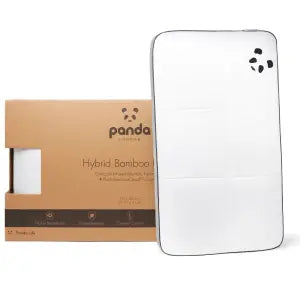 Hybrid Bamboo Pillow
Hybrid Bamboo Pillow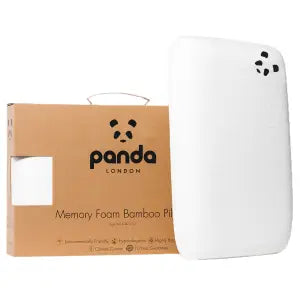 Memory Foam Bamboo Pillow
Memory Foam Bamboo Pillow Kids Memory Foam Bamboo Pillow
Kids Memory Foam Bamboo Pillow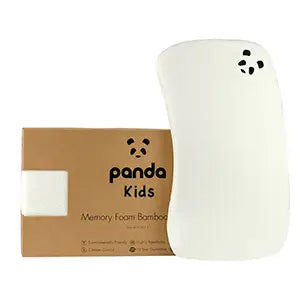 Baby Memory Foam Bamboo Pillow
Baby Memory Foam Bamboo Pillow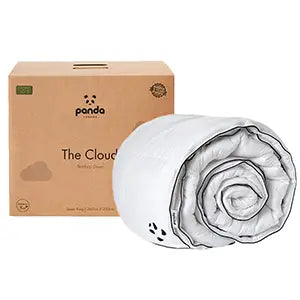 Panda Cloud Duvet
Panda Cloud Duvet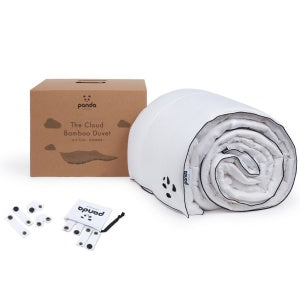 Bamboo Summer Duvet
Bamboo Summer Duvet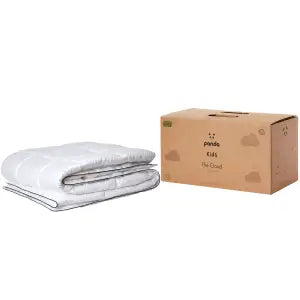 Kids Cloud Duvet
Kids Cloud Duvet
![[HybridPillow] Hybrid Bamboo Pillow - Mattress Campaign](http://pandalondon.com/cdn/shop/products/Hybrid-Bamboo-Pillow-Mattress-Campaign.jpg?crop=region&crop_height=1615&crop_left=152&crop_top=0&crop_width=1615&v=1750023555&width=1920)
![[HybridPillow] Hybrid Pillow with Panda brand marking](http://pandalondon.com/cdn/shop/products/Hybrid-Pillow_8.jpg?v=1750023555&width=1920)
![[HybridPillow] Couples laying on Hybrid Bamboo Pillows](http://pandalondon.com/cdn/shop/files/Hybrid_Bamboo_Pillow_Product.jpg?v=1750023555&width=1000)
![[HybridPillow] Red Hair Girl sleeping on a Hybrid Bamboo Pillow](http://pandalondon.com/cdn/shop/files/Hybrid_Bamboo_Pillow_-_Red_Hair_Girl_Product.jpg?v=1750023555&width=1000)
![[HybridPillow] Guy Hugging Hybrid Bamboo Pillow](http://pandalondon.com/cdn/shop/files/Hybrid-Bamboo-Pillow-Man-holding-the-pillow-1024x1024_jpg.webp?v=1750023555&width=1024)
![[MemoryFoamPillow] Panda Luxury Memory Foam Bamboo product image](http://pandalondon.com/cdn/shop/products/Panda-Memory-Foam-Bamboo-Pillow-Panda-Life-scaled-e1623788835840.jpg?v=1750023574&width=800)
![[MemoryFoamPillow] Panda London Bamboo Memory Foam Pillow](http://pandalondon.com/cdn/shop/files/03_Memory_Foam_Bamboo_Pillow__alt01.jpg?v=1750023574&width=800)
![[MemoryFoamPillow] Panda London Bamboo Memory Foam Pillow girl hugging the pillow](http://pandalondon.com/cdn/shop/files/02_Memory_Foam_Bamboo_Pillow__alt02.jpg?v=1750023574&width=800)
![[MemoryFoamPillow] Panda London Bamboo Memory Foam Pillow on a Panda Topper](http://pandalondon.com/cdn/shop/files/Memory-Foam-Bamboo-Pillow-on-Bed-Topper-and-Adjustable-Straps-Shown-Lifestyle-Square-768x768_png.webp?v=1763983719&width=768)
![[MemoryFoamPillow] Panda London Bamboo Memory Foam Pillow Girl Holding Pillow Lifestyle](http://pandalondon.com/cdn/shop/files/01_Memory_Foam_Bamboo_Pillow__alt04.jpg?v=1763983719&width=800)
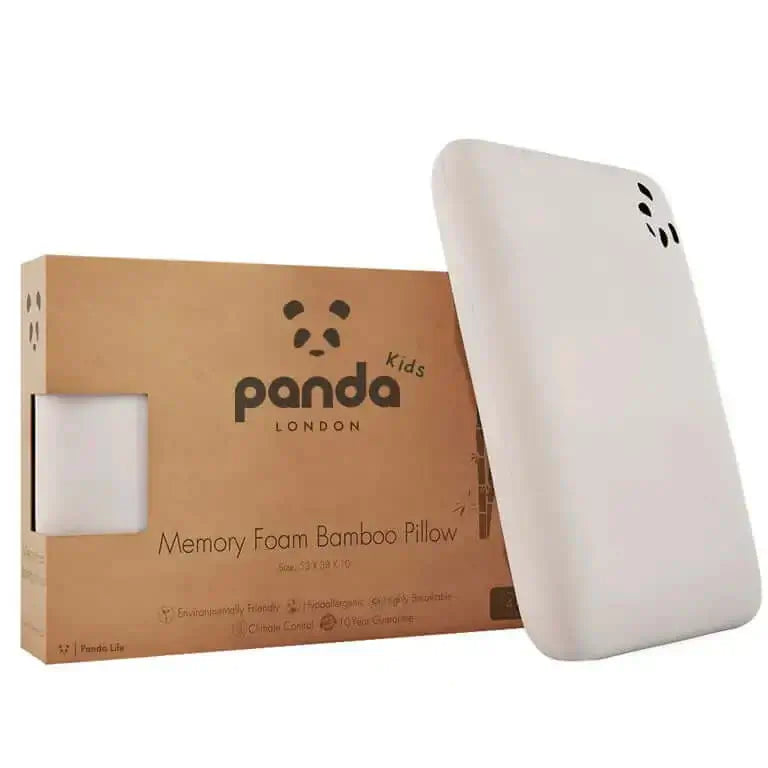


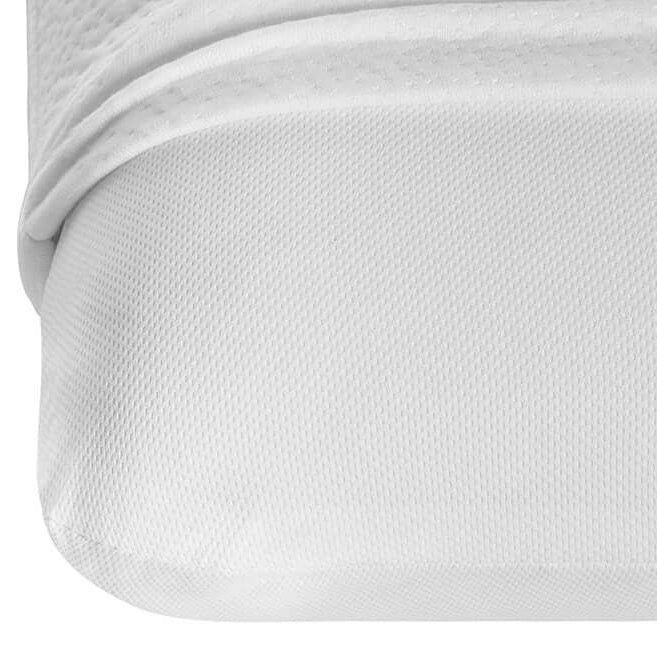
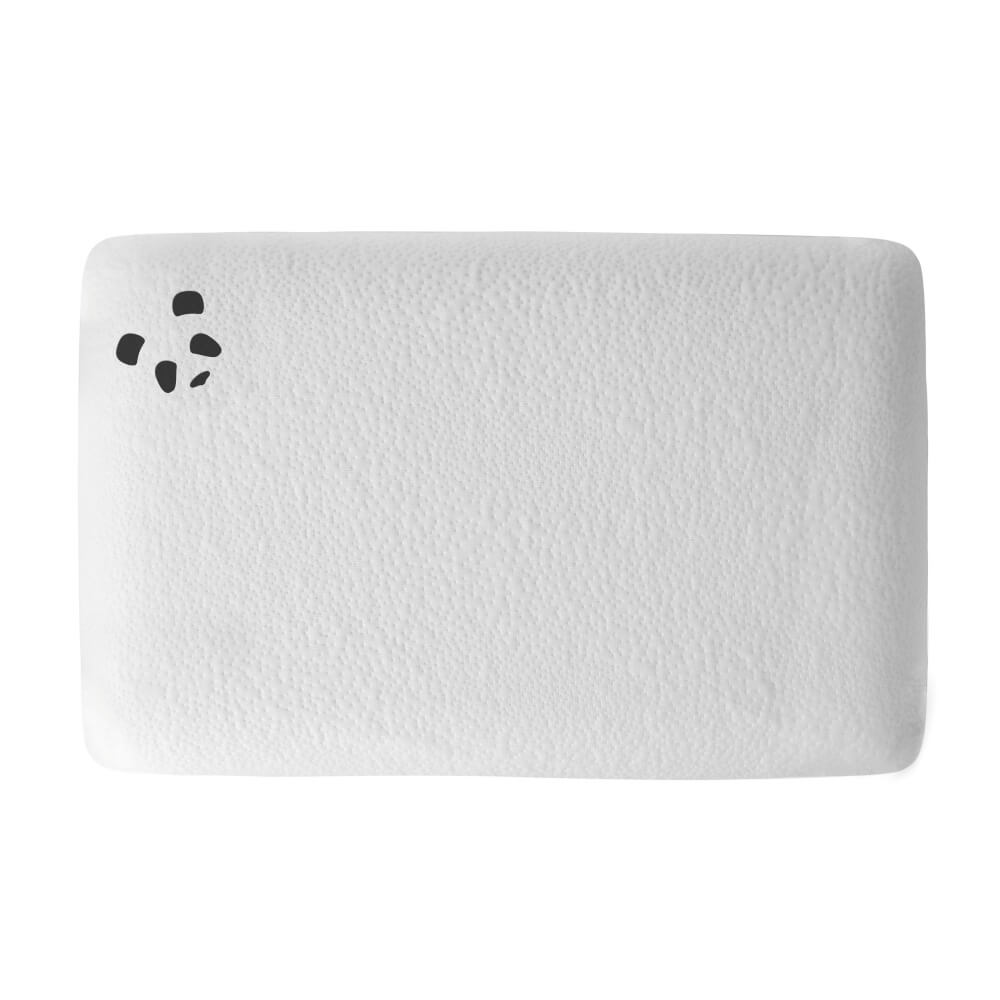
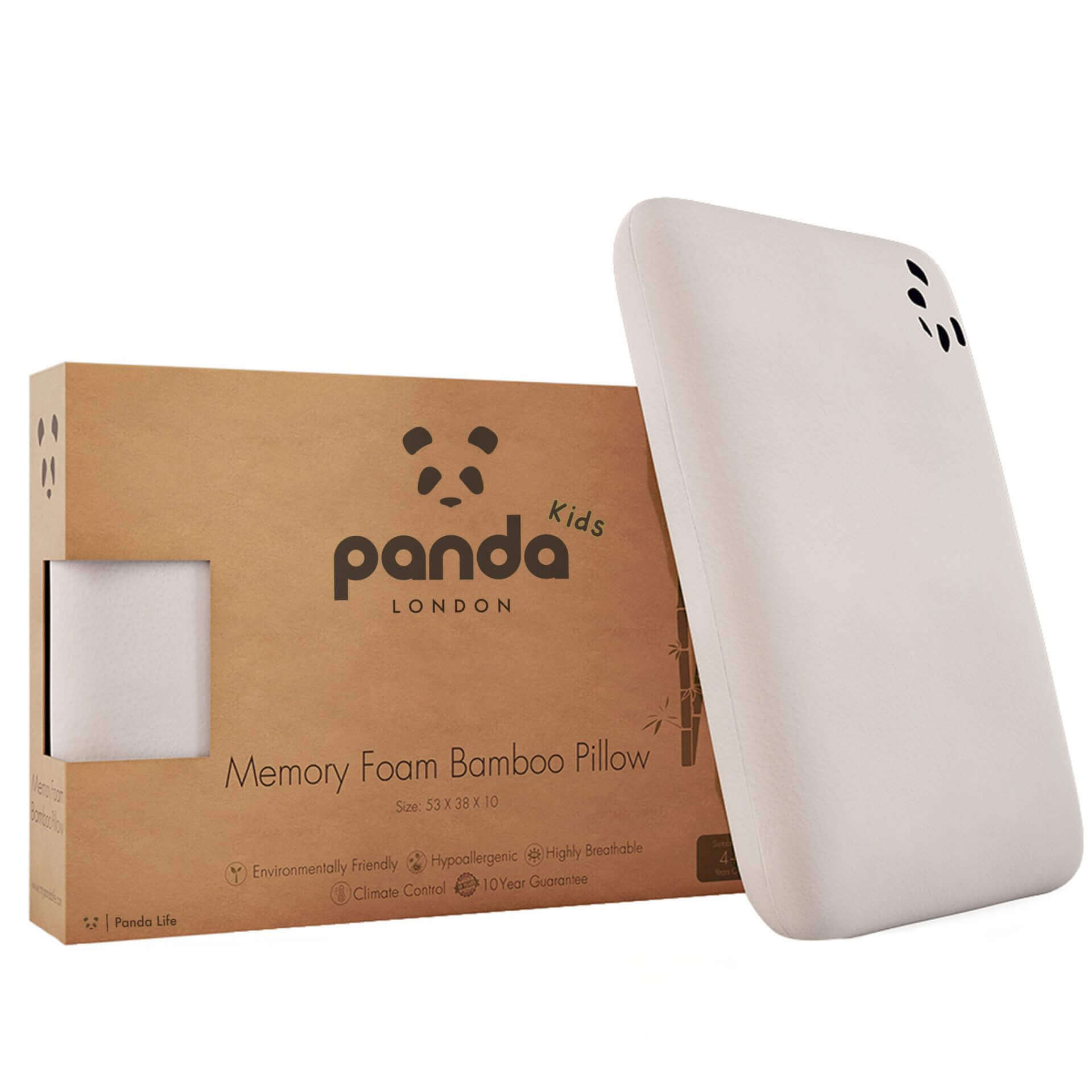
![[Pillowcovers] Pillowcase-Kids-Pillow-White-Background-](http://pandalondon.com/cdn/shop/files/Kids-Pillow-White-Background-Square_jpg.webp?v=1713361847&width=745)


